► An affordable EV that you actually want
► Up to 255 miles of WLTP range
► UK pricing from £23k
Rarely has a car ever caused such a stir like the all-new, all-electric Renault 5 E-Tech. In isolation, each of its virtues – the chic looks, funky interior, decent build quality and agreeable price – would stand the car in good stead, but it’s their sum that’s turned the 5 E-Tech’s launch into such a special moment.
If you’ve memories of the original model, you’ll no doubt feel relieved to see that the designers have nailed the balance between old and new. Chunky and resolutely modern, but with just the right amount of retro thrown in.
Like other retro hits such as the Mini Cooper E and Fiat 500 E, there’s a wide range of colours, decals and other customisation options to open your wallet further. While the bottom two trims are set for the foreseeable, the range topper will change every year. Expect similar equipment but very different looks.
Sounds good, but just how affordable is the 5? You’ll need £23,000 for the 40kWh (usable) LFP battery that manages 194 miles of WLTP range. If you want the 52kWh pack that ups that range to 255 miles, you’ll need to jump from base Evolution to mid-range Techno trim and spend an extra £4,000.
We drove the car in Denmark, had a blast in a left-hooker in the UK, but now it’s time for a go a right-hand drive model. Have familiar roads, routines and the correct driving position dampened our enthusiasm? Read on for the full review from CAR, or head over to our how we test cars page to find out how we reached our verdict.
At a glance
Pros: Good to drive, low price, epic styling, great infotainment
Cons: Real-world range seems underwhelming, annoying stalk arrangement, tiny rear footwell
What’s new?
All of it. Even the platform – dubbed the AmpR Small platform – is new and will underpin more Renault electric cars in the near future, including the Renault 4.
A new platform means lots of other cool new stuff, too of course, including vehicle-to-load charging, and from 2025 the Renault 5 will also support vehicle-to-grid so that you can run your home from the car. Is this the coolest backup generator, ever? We suspect so.
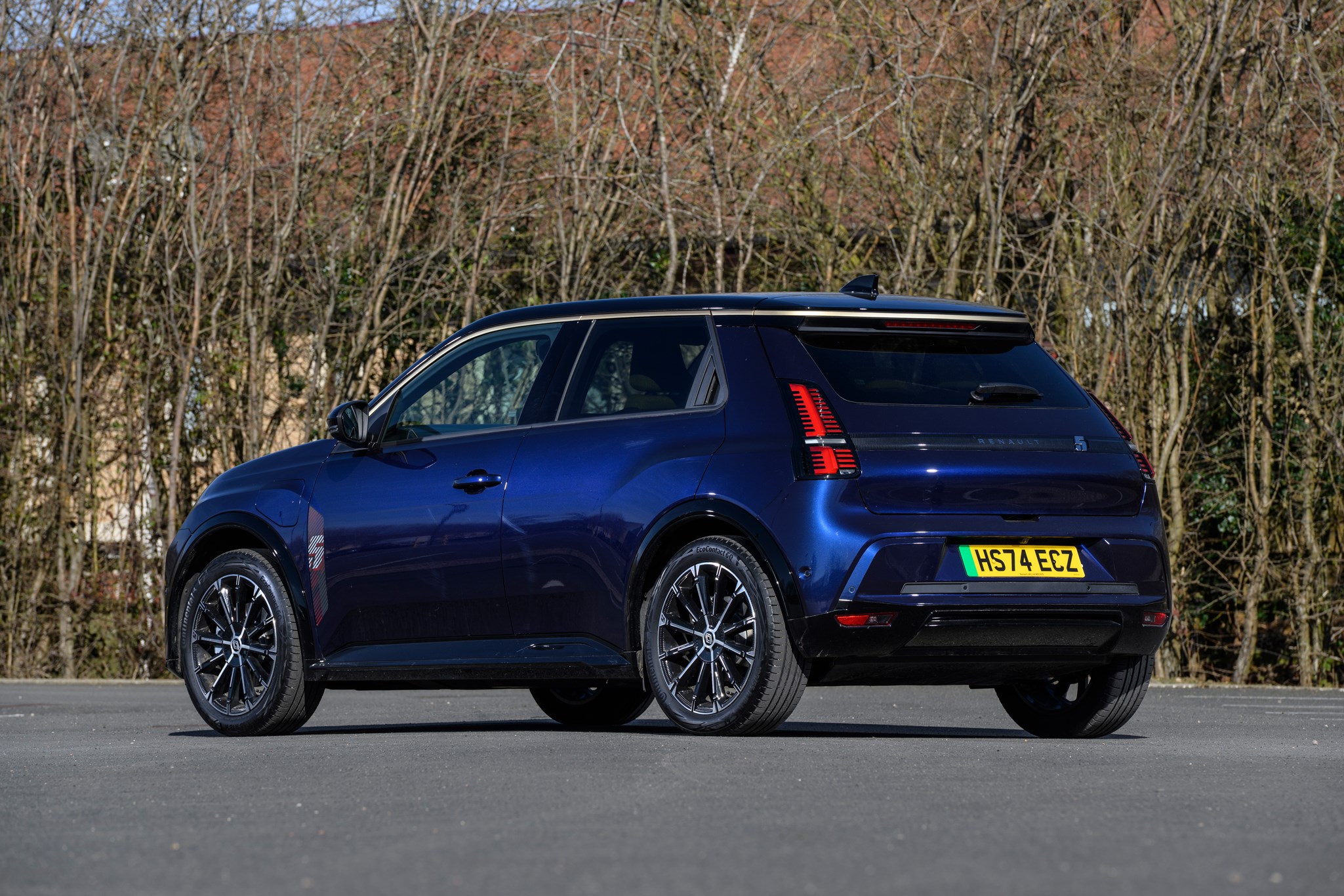
Obviously the interior is all-new, too, complete with plenty of nods to the original Renault, some very bright colours if you choose them, lots of recycled materials and even a baguette holder, if you spec it. The touchscreen will be familiar if you’ve spent time in Renaults, as it gets the Google software from the Scenic and Megane, although there are some tweaks to the software on the slim, landscape screen.
What are the specs?
Well, the Renault 5 doesn’t major on pace, but that’s only right as it’s not intended to be a hot hatch. That’s reserved for the forthcoming Alpine A290 with which it shares its 2025 European Car of the Year title with.
As such, the 5 comes with a modest 121bhp and 166lb ft when fitted with the smaller battery, although 0-62mph time hasn’t been confirmed yet. The big battery version gets a slightly punchier 148bhp and 181lb ft, for a 0-62mph in 8.0sec. That is only a fraction slower than the Renault 5 GT Turbo we drove from 1990, though…
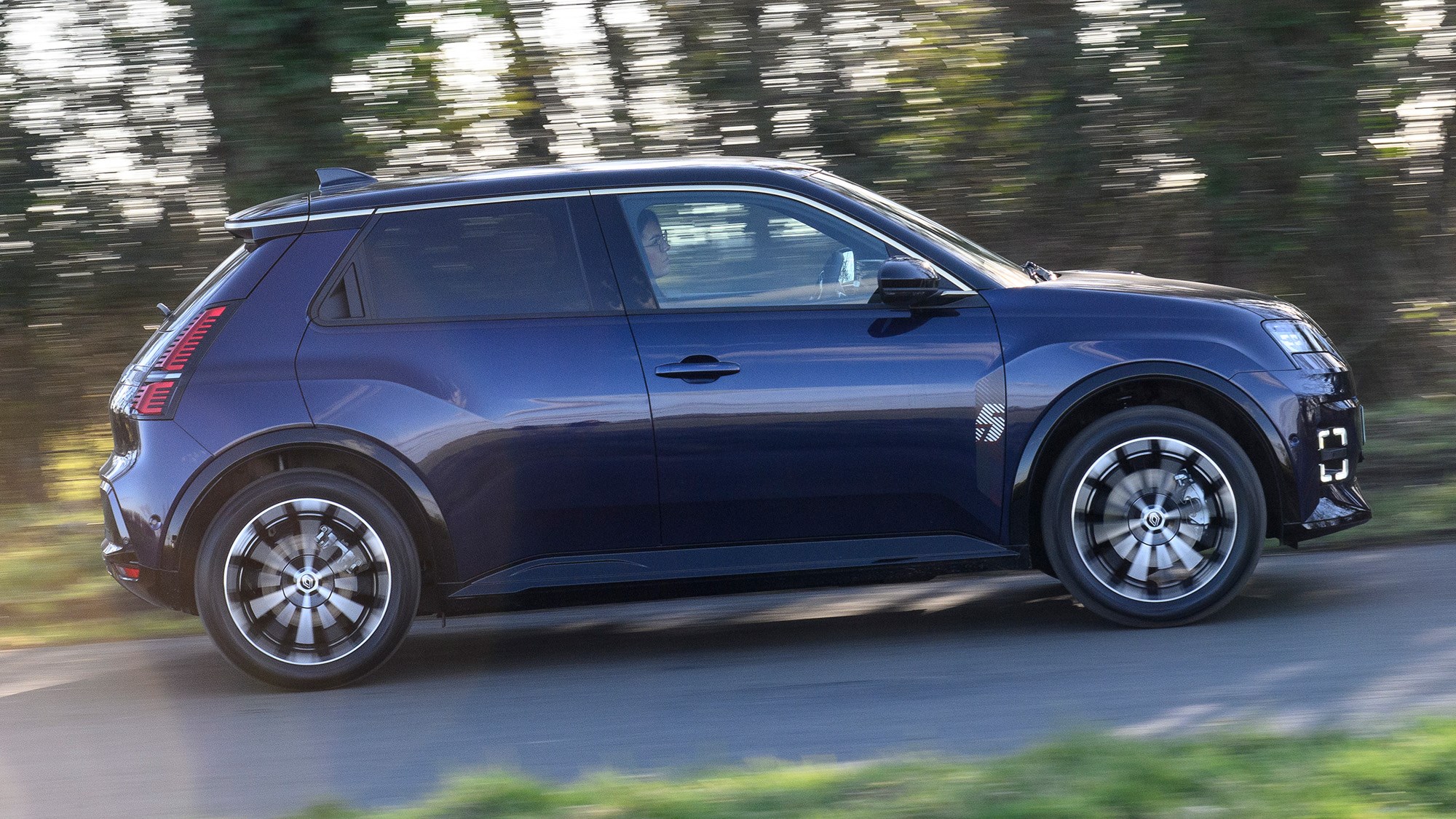
Rapid charging peaks at 100kW, which is pretty par for the course alongside rivals like the electric Mini Cooper, Fiat 500e, Citroen e-C3 and Peugeot e-208. It’ll get you a 10-80 per cent charge in around 30 minutes, or plugging into a 7kW home wallbox will fully charge the 5 in six to nine hours depending on battery size. It will take an 11kW AC charge if you’ve got access to a charger to support those speeds, and of course you’ve got that V2L facility, too.
Also, while we’re on specs – you can tow a 500kg trailer with the Renault 5. You’ll be the coolest person at the tip, no doubt about that.
How does it drive?
It’s rather brilliant, to be honest. As long as you’re not expecting hot hatch-ness, anyway. Wieldy. That’s the word that comes to mind.
Our car came on 195/55 R18 rubber, which is unusual as you rarely see a chunky 55-section sidewall, these days. It feels a little firm and fidgety on UK roads, though not quite Mini stiff, and with enough initial compliance to round off even the worst bumps. You’d happily live with it, but look elsewhere for a cushy ride.
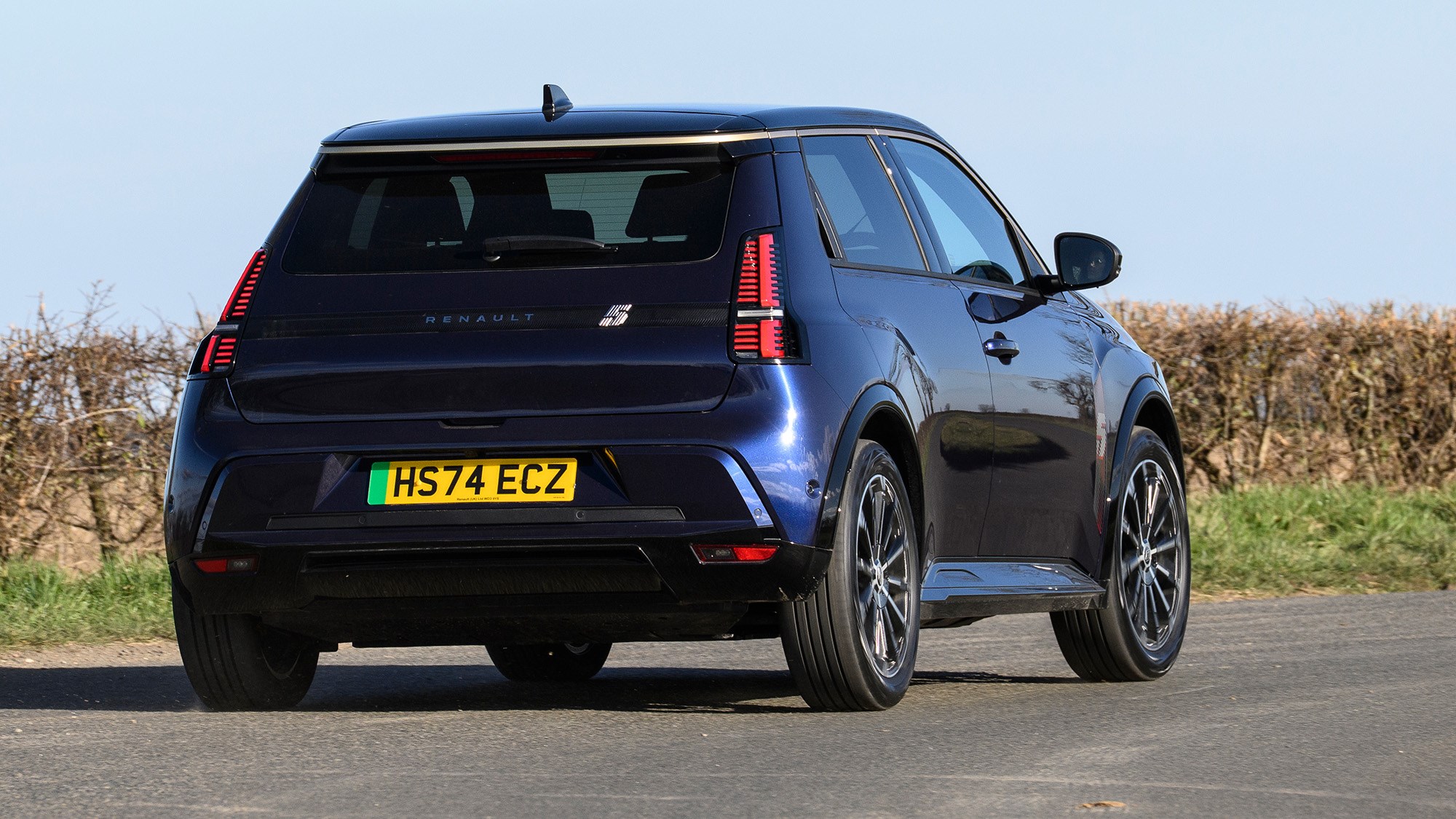
Add quick steering to this – 2.6 turns lock-to-lock for a 10.3-metre turning circle – and you have a delightfully perky yet acceptably comfortable balance that’s ideal for anything from a torturous multi-storey to a chilled motorway run. A little more front end would be welcome, as the skinny tyres tend to run out of grip pretty quick under hard turn in, but it nonetheless feels agile on UK roads.
Ultimately, this does feel like a more moderate car to drive than the overtly firm and sporting Mini, there’s no doubt about that. But the 5 is intuitive and easygoing while still being good fun if you want to gamely swing it through some corners.
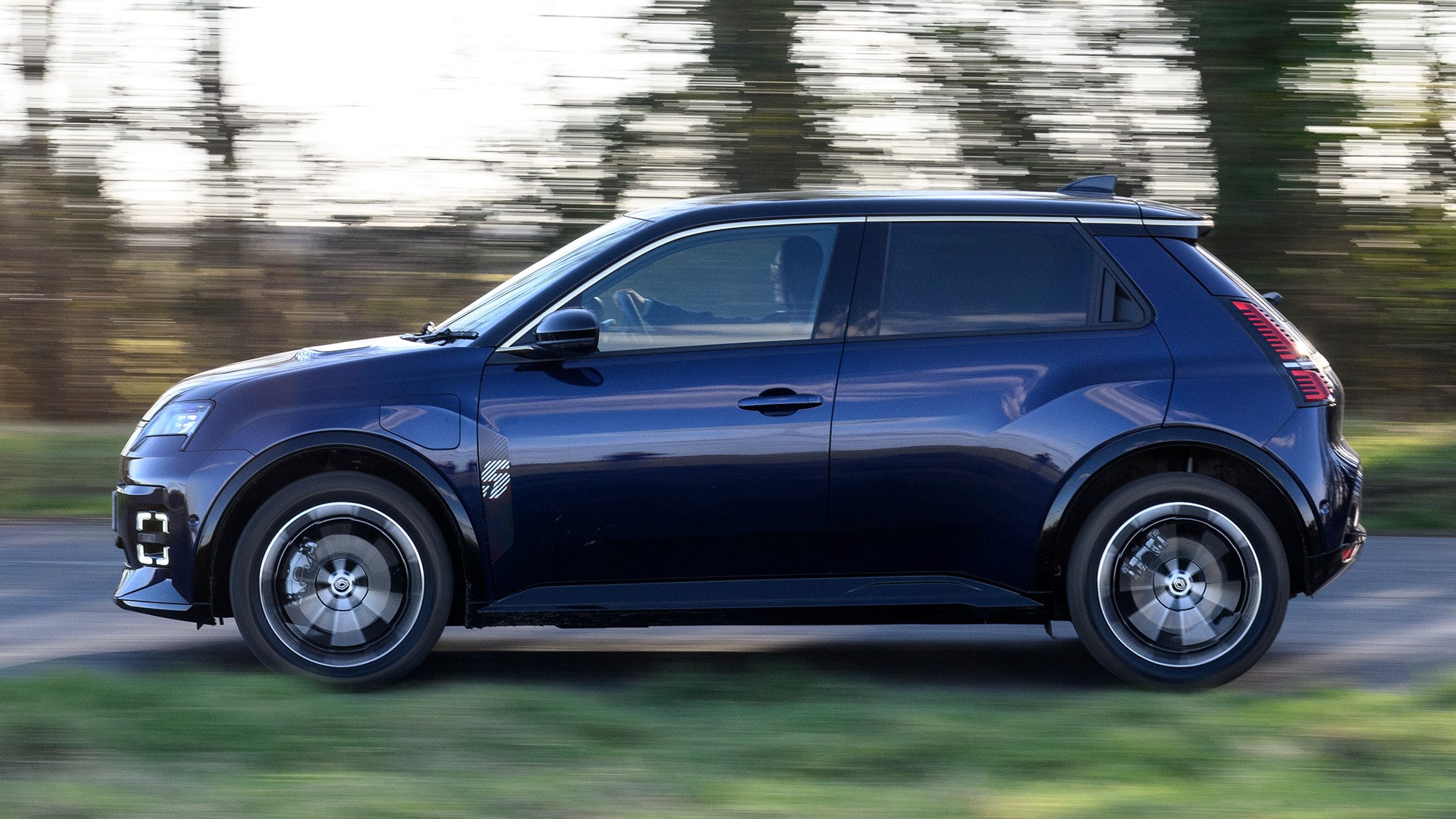
That wide stance, wheels at the extremities, a fairly low kerbweight of under 1.5-tonnes… it feels properly responsive and cheerfully unintimidating. The 5 E-Tech isn’t hugely fast, but that’s fine as it means you can use 100% of the potential without fearing for your life or your licence.
However, we have one concern with the Renault 5, and that was the real-world range that we were seeing. In fairly warm weather and moderate driving speeds, we still only managed around 180 miles from the 52kWh battery in our test car. This dropped to around 140 miles in the UK, albeit in near-freezing conditions. Mind you, that’s much the same as what most rivals deliver, so it’s no deal breaker in this class.
What about the interior?
It’s surprisingly useful, the Renault 5. Sure, it looks pretty eccentric – especially with the retro ‘heather yellow’ upholstery, and there are neat details like the decal on the dash that changes colour with the drive mode, and the little etched Renault 5 face in the wireless phone charging tray. But you also get a cushy seat with simple manual adjustment and electric lumbar adjustment, and while we’d like the seat and wheel to drop a tad lower, there’s enough adjustment (including the rake- and reach-adjustable steering) for most drivers to easily find a natural-feeling driving position.
The fact that you get physical air-con controls, an actual button that instantly activates the settings that you’ve saved for safety aids including lane-keep assist and speed-limit warning, and even proper buttons on top of the touchscreen housing to control the volume and turn the screen off, is a huge bonus.
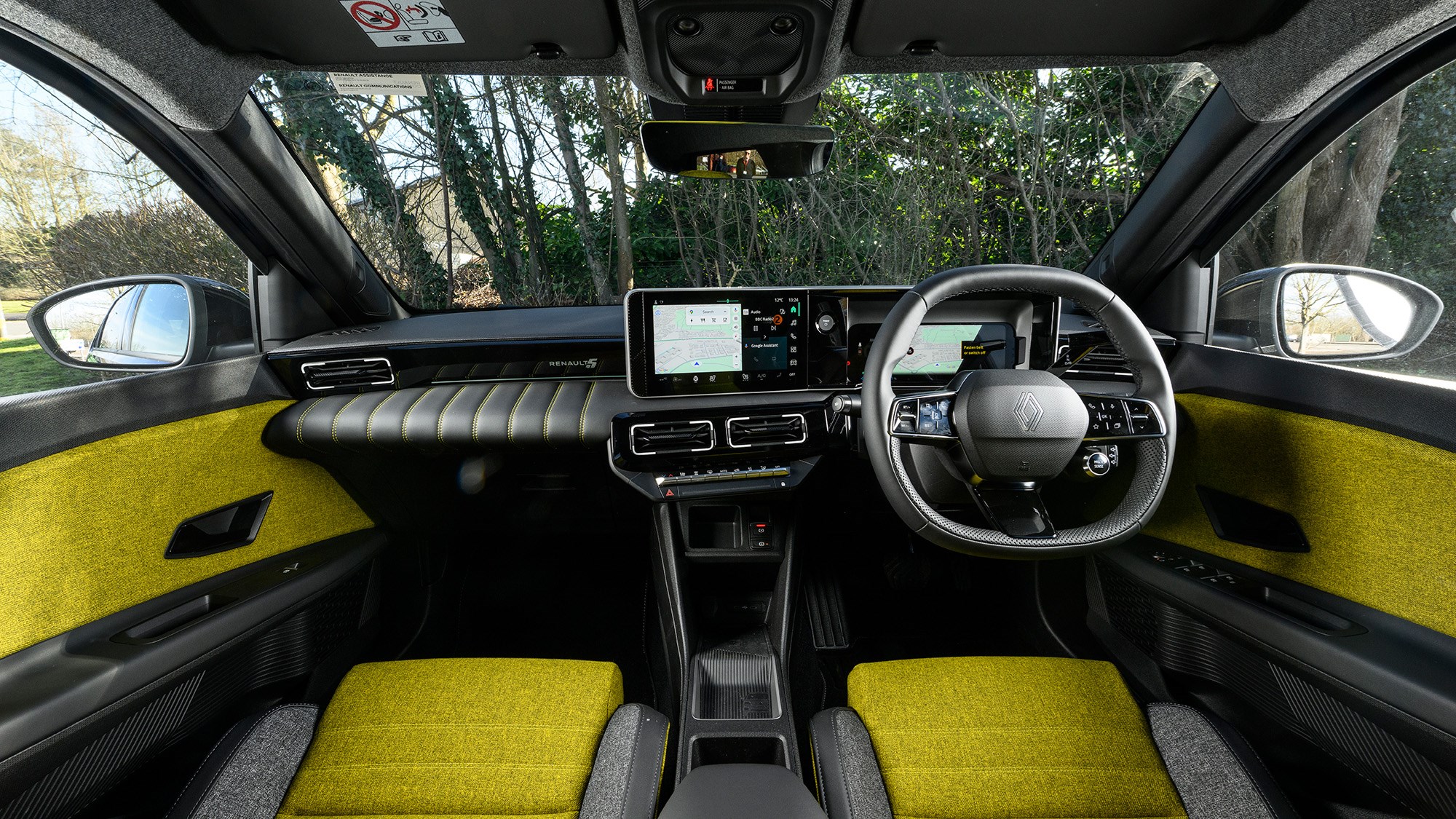
Plus, that Google software on the infotainment system is straightforward, the screen responds quickly and you get Apple CarPlay and Android Auto if you want them. That’s all you need, really, isn’t it?
Really, our only quibble is that there are too many stalks clustered on the right-hand side of the steering wheel, making it easy to viciously wipe the windscreen when you were going for reverse. The action going into Park on the gearshifter feels a bit clunky, too, and actually doesn’t go into Park but goes into Neutral – relying on the automatic electric handbrake to hold the car in place, instead. Which seems just plain weird, and unlike any other EV we can think of. What was wrong with a ‘Park’ setting?
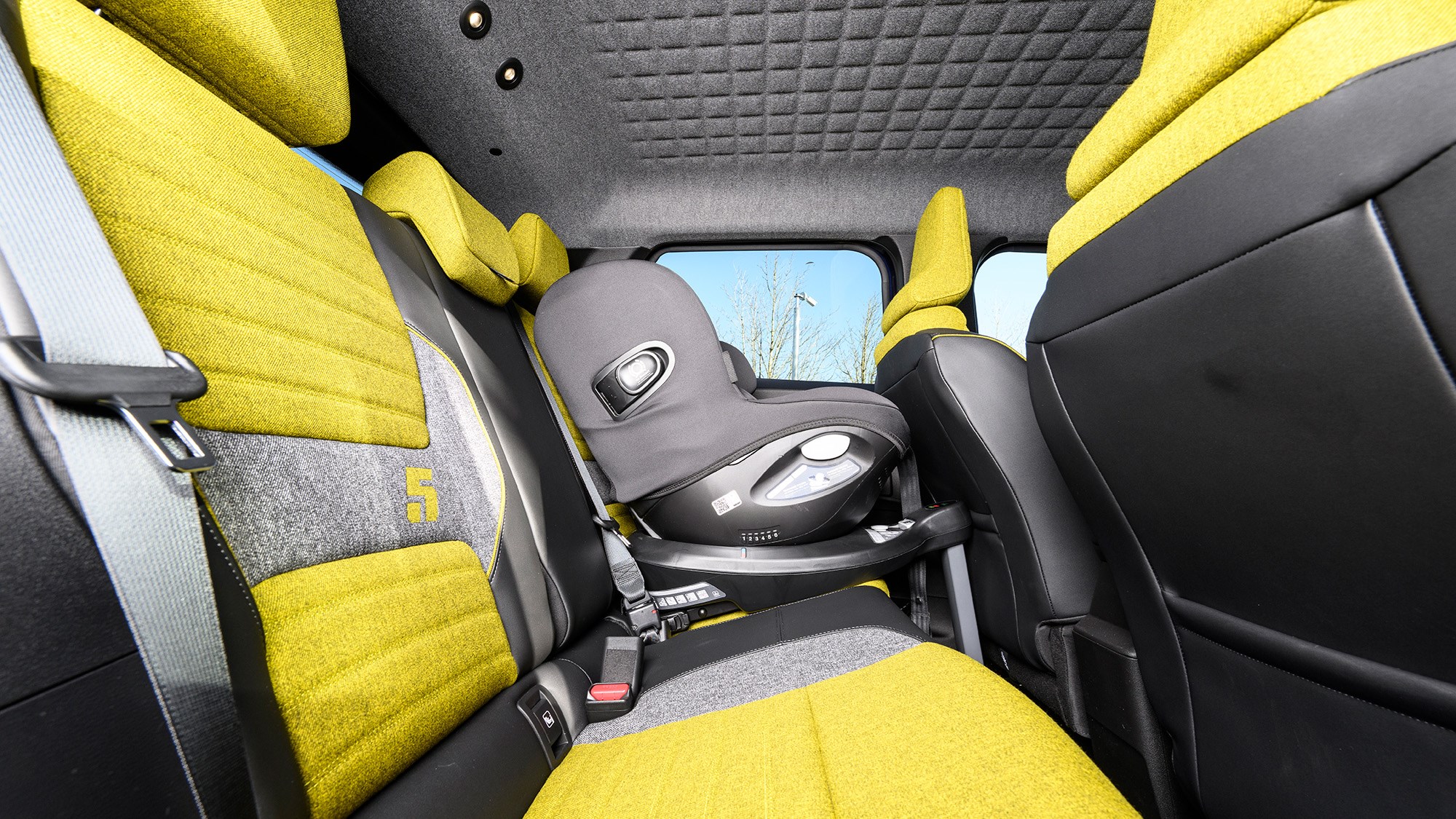
Anyway, those in the back have more space than in a Mini or 500, if a very cramped area for their feet, especially if the seat in front is in its lowest setting. The rear doors could do with opening wider, but an average-sized adult will be fine back there, and you even get a centre rear armrest and a couple of charging sockets.
The taller among us might struggle – particularly if you’re sat behind a lanky driver – and you’ll need the front seats set quite far forward if you want a rear-facing Isofix seat behind them. As for the boot, it’s not bad at all for this size of car. There’s 326 litres on offer, plus a useful amount of underfloor storage for your cables, and you can fold the rear seats in a 60/40 split if you need to. There’s no frunk, though, which is a shame.
Before you buy
The 5 will come in Evolution as the base trim, which will only be offered with the 40kWh battery. Mid-spec Techno trim will be offered with both batteries, and will probably be the big seller at roughly £27,000 when paired with the bigger option. It has all the kit you really need, almost.
Top-spec Iconic Five is the option for you if you want all the decals and cool design details, not to mention the bright interior finish to match the delightfully lurid Pop Yellow or Pop Green. Naturally, both of these colours are inspired by the original 5, which arrived in 1972, and went on to sell over 5.5m units around the world up until it went off sale in 1985. Crucially, you get heated front seats and steering wheel, but a bill for almost £29k if you want the big battery, more if you raid the options list
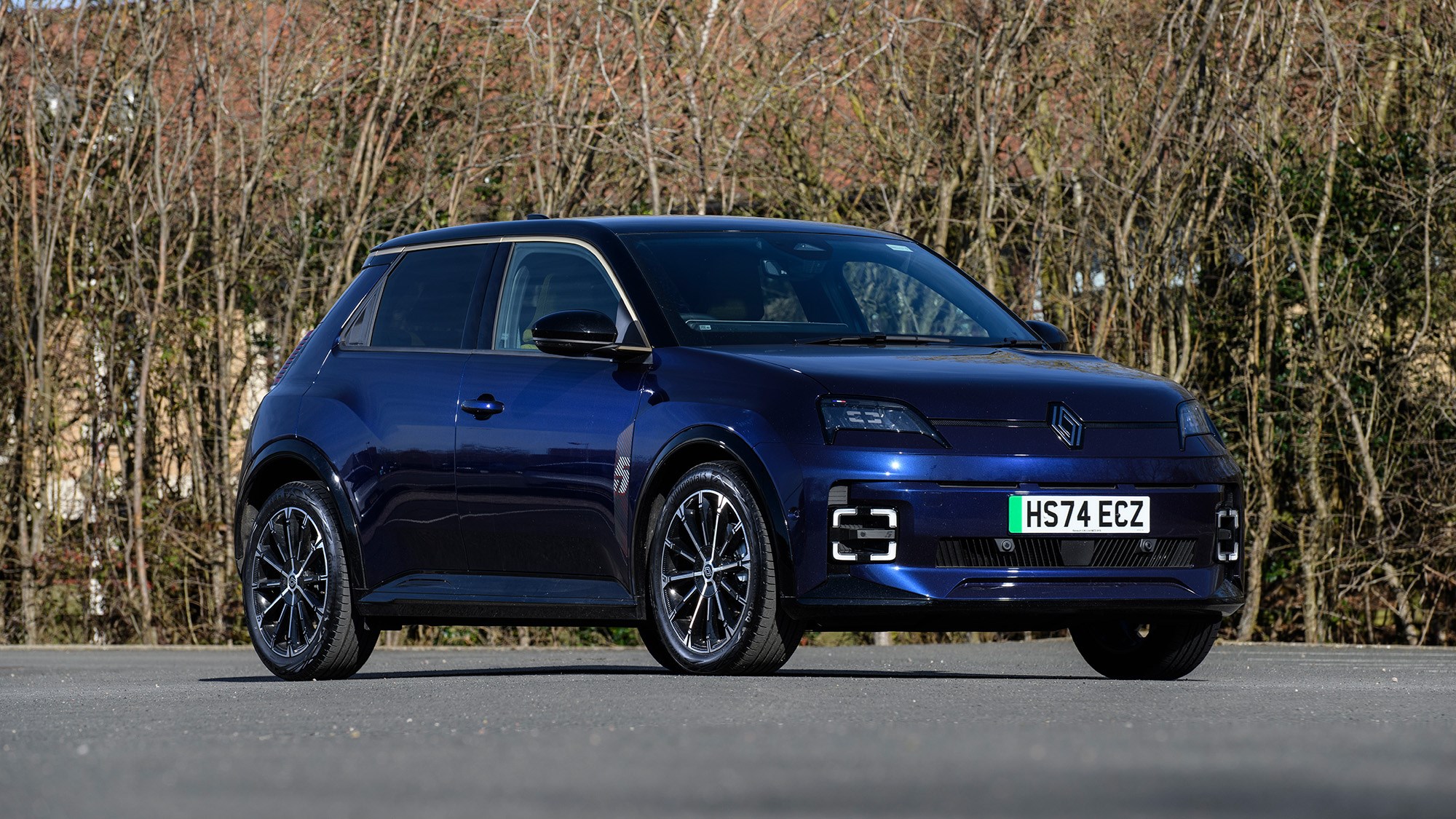
Mind you, the Iconic Five trim won’t be around for long. Renault is promising to change the top-spec 5 each year, to give it an annual ‘season’ along the lines of haut couture fashion lines, and all of that. Details like the decals and colours will change, and Renault is even promising bespoke 3D-printed touches, such as the tip of the gear-shifter that protrudes from behind the steering wheel. It has a 3D printed tip and is designed to look like a lipstick case and can be personalised, in case one day you fancy a fresh colour for your gear shifter.
Renault 5: verdict
Rarely has a new car carried such a weight of expectation. Despite going off sale decades ago, the old 5 and Supercinq hold many treasured memories for their owners, so Renault really didn’t want to do a Capri.
But, d’you know what? It really is brilliant: Cheerful, easy and fun to drive, yet also reasonably comfortable, surprisingly useful and brilliant value. And all in a car that really does have presence on the road.
Sure, the 5 isn’t without competition in the affordable electric car class thanks to this year’s flurry of new arrivals, and that’s great for the consumer. But we do wonder if Renault might have just wrapped up the small electric car class with the 5. After all, it’s an attainable, practical electric car but, more importantly, it’s a car that you actually want to own. That you’d like to be seen in. Plenty for the head, and even more for the heart.